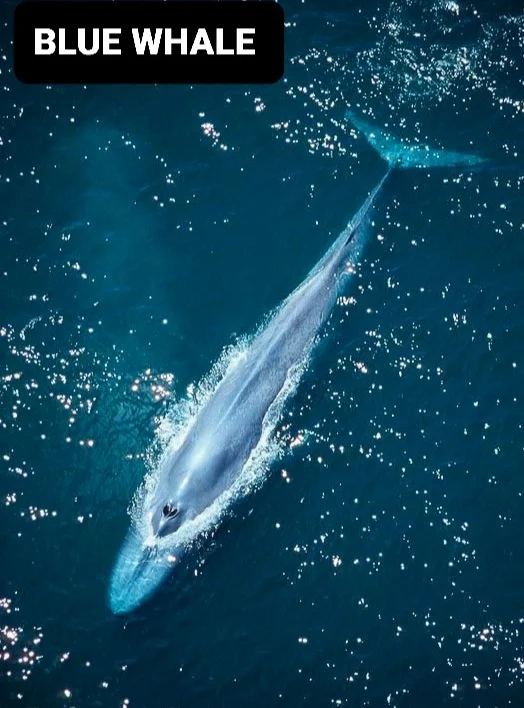
The blue whale, with its immense size and gentle nature, is truly a marvel of the animal kingdom. Here are some amazing facts and exciting information about this gentle giant:
Size Supremacy:
-
They hold the title of the largest animal on Earth, both alive and extinct, dwarfing even the biggest dinosaurs. An adult blue whale can reach up to 30 meters (98 feet) long, longer than three school buses placed end-to-end! Their weight can tip the scales at a staggering 200 tons, equivalent to 33 elephants or 2.5 bluefin tuna!
-
Even newborn blue whales are giants, entering the world at around 7 meters (23 feet) long and weighing 2.5 tons, heavier than most adult hippos! They grow rapidly, gaining up to 400 kilograms (880 pounds) every day during their first year.
Oceanic Adaptations:
-
Their sleek, streamlined bodies are perfectly designed for efficient movement through the water. Their skin is smooth and elastic, minimizing drag, while their powerful flukes propel them at speeds of up to 10 knots (18.5 km/h) during bursts.
-
Their lungs are the size of a small car, allowing them to take in massive amounts of air with each breath. They can dive for up to 20 minutes and reach depths of over 1,000 meters (3,280 feet) in search of food.
Vocal Champions:
-
Blue whales are the loudest animals on Earth, producing vocalizations that can reach 188 decibels, louder than a jet engine taking off! Their low-frequency songs travel for hundreds of kilometers underwater, potentially serving for communication and attracting mates.
-
Interestingly, their songs vary between populations and even change over time, suggesting cultural transmission and a complex communication system within these gentle giants.
Gentle Giants:
-
Despite their immense size, blue whales are filter feeders, primarily munching on tiny shrimp-like crustaceans called krill. Their enormous mouths can engulf huge volumes of water and krill, which are then strained through baleen plates, acting like a giant sieve.
-
They are solitary creatures for most of the year, but come together in feeding grounds or during breeding season. They are generally peaceful and curious, often approaching boats and even allowing humans to swim alongside them.
Conservation Concerns:
- Sadly, blue whales were hunted to near extinction in the 20th century. Fortunately, international protection measures have helped their populations rebound, though they are still classified as endangered. Threats like ship strikes, entanglement in fishing gear, and ocean pollution continue to pose challenges.
By understanding and appreciating these magnificent creatures, we can ensure their continued existence and protect the delicate balance of our oceans. Remember, the next time you hear the distant song of a blue whale, you're listening to the voice of the largest and most awe-inspiring animal on Earth!
I hope you found these facts and information about the blue whale amazing and exciting! It's truly a privilege to share our planet with such incredible creatures.


